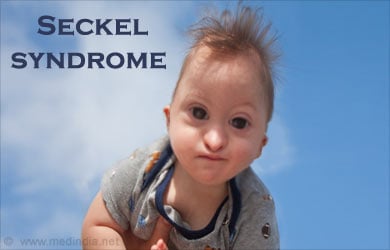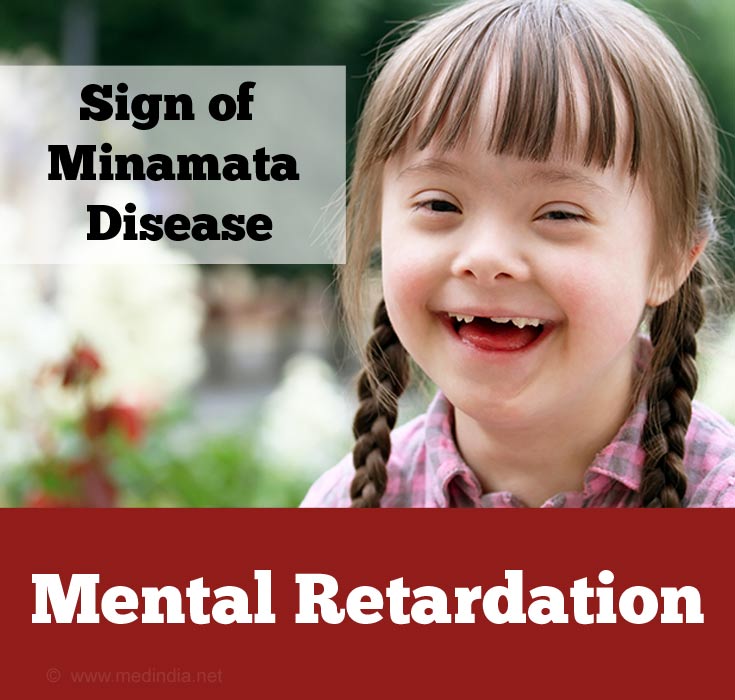- Thompson E, Pembrey M. Seckel syndrome: an overdiagnosed syndrome. J Med Gen. 5;22,192-201.
- Kalay E et al. CEP152 is a genome maintenance protein disrupted in Seckel syndrome. Nat Genet. 2011;43:23-26.
- Primary Autosomal Recessive Microcephalies and Seckel Syndrome Spectrum Disorders - (http://www.ncbi.nlm.nih.gov/books/NBK9587/)
- Seckel syndrome - (http://www.omim.org/entry/210600)
- About Seckel Syndrome - (https://rarediseases.org/rare-diseases/seckel-syndrome/)
What is Seckel Syndrome?
Seckel syndrome is a rare genetic condition of dwarfism that involves intrauterine growth retardation (smaller size at birth), microcephaly (abnormally small head), mental handicap, short build, large eyes, narrow jaw, deformed hips, bent fifth finger, and birdlike features (receding forehead and chin with beaked nose). The syndrome is observed equally in males and females. This condition is also known as bird-headed dwarfism, nanocephaly, microcephalic primordial dwarfism, Seckel type primordial dwarfism, SCKL. Seckel first described this syndrome in 1960 after observing 2 cases.

Causes of Seckel Syndrome
Seckel syndrome is a rare genetic condition that is inherited in an autosomal recessive manner. This means that the chance of both the copies of the gene to get affected is rare. When one of the copies is affected, the individual is a carrier. Some of the genes that are mutated and cause Seckel syndrome are CEP152 (SCKL5), NINI (SCKL7), CEP63 (SCKL6), RBBP8 (SCKL2), ATRIP (SCKL8), and ATR (SCKL1). These genes are involved in maintaining genomic stability. Seckel syndrome also causes pancytopenia, ahematological disorder.
Symptoms / Clinical Features of Seckel Syndrome
Clinical features of Seckel syndrome include the following:
- The circumference of the head is small for the age of the infant.
- Associated mental retardation

- Intrauterine growth retardation resulting in low birth weight
- Short stature due to postnatal growth retardation
- Defects in dentition – crowding of teeth, defects in enamel development (hypoplasia)
- Large eyes, sloped eyelids, eyes are crossed
- Bird-like features (sloping forehead, beaked nose, unusually small jaw [micrognathia])
- Ears with no ear lobes
- Structural defects: Hip, forearm, elbow bone defects and dislocation.
- In some cases, 11 pairs of ribs instead of the usual 12
- Structural defects in the spine
- Bent fifth finger (clinodactyly)
- Foot in a twisted position (clubfoot)
- Excess body hair (hirsutism)
- Testes fail to descend into the scrotum in males
- Abnormally large clitoris in females
- Decrease in blood cells (pancytopenia). Less than 25% of the Seckel syndrome patients may exhibit blood cancer.
Diagnosis of Seckel Syndrome
The diagnosis of Seckel syndrome is based on the following factors:
Genetics: Family history is considered by genetic counselors to determine the chance of developing this syndrome.
Imaging of the brain: Seckel syndrome is characterized by microcephaly. It has been observed that the development of the brain is affected in the second trimester of pregnancy. When the occipitofrontal head circumference at birth is less than 2 standard deviation of the mean value based on the age, ethnicity, and gender, the child is diagnosed with Seckel syndrome.
Ultrasound: For high-risk Seckel syndrome cases, ultrasound is a good technique to detect the growth retardation of the fetus in the second trimester in the uterus. However, ultrasound is unable to detect low-risk Seckel syndrome.

Molecular genetic testing: Molecular genetic testing may show mutations in genes that help in the diagnosis of the condition. The genetic defects are more often observed in Asia, viz. India and Pakistan.
Treatment for Seckel Syndrome
The disorders observed in Seckel syndrome range from structural deformities to blood disorders. Hematological problems such as leukemia and anemia can be treated with appropriate medication and therapy.
Mentally challenged individuals along with their families need to be given appropriate social support and counseling services.

Genetic analyses can be performed on the fetus if the first child is born with the syndrome and if the contributing mutation is identified. Genetic counseling of families with a family history is essential to understand the risk of having a child with Seckel syndrome.
Seckel Syndrome Life Expectancy
There is no confirmed evidence of life expectancy but individuals with Seckel syndrome are known to have a life expectancy of more than 50 years.
Health Tips
Seckel syndrome is a genetic condition that is inherited in an autosomal recessive manner. Families with a genetic history of Seckel syndrome should avoid marriages between family members to reduce the chance of this syndrome. Carriers of this syndrome should seek genetic counseling to understand the risk of transmitting the affected gene to the next generation.







